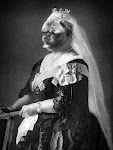Adam Schoenberg, born in 1980, is an
Oberlin and Julliard graduate and a member of the “Atlanta School”
of composers which include Jennifer Higdon, Oswaldo Golijov, and
Christopher Theofanidis among others. For his first effort as
Composer in Residence, Schoenberg collaborated with Kansas City's
world renowned Nelson-Atkins Museum of Art to create a 21st century
recasting of Mussorgsky's “Pictures At An Exhibition”. Schoenberg
paid several visits to the museum picking works from the collection
to enshrine in sound. The result is a large work for orchestra titled
“Picture Studies” given its world premiere performances the
weekend of February 1-3. Michael Stern conducted the Kansas City
Symphony in the concert that also included the Martinu “Frescoes of
Piero della Francesca” and the Schumann Cello Concerto.
Schoenberg's protagonist, in contrast
to Mussorgsky's more confident and hurried patron, seems to wander in
with his/her head to the sky, trying to take in all the sights and
stimulus of an art museum. Instead of viewing one artist's work, the
visitor sees a wide variety of works including sculpture, paintings
and photographs from artists such as Kandisky, Miró, van Gogh,
Bloch, Francis Blake and Rothko.
Two sections were to most effective
and original. “Kandinsky” (Rose with Gray 1924) was all angular,
busy, tense, vibrant and in your face. As in the painting, the
incongruous motifs were cut and pasted, superimposed and even buried
in the rich, percussive texture. The all too short “Calder”s
World” (untitled sculpture 1936) is a mini masterpiece; as static,
balanced, edgy and timeless as the Calder sculpture. Winds and brass
paid homage to the metal and wood of the piece while the undulating,
almost breathless strings took us to the primal world of time. As in
Ives' “Unanswered Question” they seemed to emerge from the
background as if they had been there all along then fade to whence
they came. A breathtaking example of tone painting at its finest.
The van Gogh “Olive Orchard” was
Debussy's impressionism as seen through a Copland lens. The movement
grew organically to a full climax but chose not to capture the bold
strokes and knotty, twisted texture of the olives. Instead we hear
more quiet and lyrical music that is “Colorful, full of love”
according to the composer's notes. “Three Pierrots” (Albert Bloch
“Die Drei Pierrots nr. 2” 1911) with its mallet infused, jaunty
rhythms evoked Petroushka and the comedic, slightly clumsy dance
depicted in Bloch's painting. The last two movements, both inspired
by photographs (one of a vast ocean then other of pigeons in flight)
took the work into an extended, ecstatic climax. Any listener
familiar with Higdon's “Blue Cathedral” or Theofanidis' “Rainbow
Body” would recognize this section.
From the myriad of social media
comments and the prolonged ovation given to the performers and
composer, Picture Studies' easy going, approachable and colorful
style resonated with the audience.
In the spirit of full disclosure, I am
a great fan of the Martinu “Frescoes of Piero della Francesca”
composed in 1955. A brilliant piece of programming since the work was
also inspired by a composer's viewing of visual art, in this case the
magnificent “History of the True Cross” by the Renaissance artist
Piero della Francesca in Arezzo, Italy. One of Martinu's most
imaginative works, it is a little less motoric and neo-classical than
many of his works and much more impressionistic and lyrical.
Unlike Picture Studies, these three
frescoes are not so much programmatically depicted but provide
musical accompaniment to their viewing. Martinu captures the grand
scale, the muted colors, the angularity and the mysticism behind the
frescoes. Stern and his forces were technically fine in this somewhat
cool performance. I wished for a fuller string section in the
climatic string cadenza in the second movement but Christine
Grossman's fanfare like viola solo leading into the climax was
wonderfully executed. Martinu was frequently inspired by jazz and
thus the last, battle inspired movement brought more of the rhythms
associated with the composer. Stern and company relished this more
animated section, perfectly resolving the martial tones into the lush
and serene final chords.
Armenian born Narek Hakhnazaryan, 2011
International Tchaikovsky Competition Gold Medalist and student of
Mstislav Rostropovich was a stellar soloist for the hyper-romantic
and melodic Schumann Cello Concerto op 129. Stern in collaboration
with Hakhnazaryan chose brisk tempi for the concerto's three
connected movements while still allowing the cello to sing through
the torrent of melodies; too slow tempi risks the work turning into a
hyperglycemic mess. Hakhnazaryan's tone was dark and rich through
out, yet fleet of bow in the cadenzas and the lively concluding
rondo. The unusual duo between the cello solo and the principal
orchestra cello in the lyrical intermezzo-like second movement was
particularly well done.
The Schumann is hardly the most flashy
concerto in the repertoire but certainly showcases the instrument's
lyrical abilities. Needing fine control of tempo and tone to produce
an excellent performance, both Stern and Hakhnazaryan came through,
bringing out the organic flow of the work from its breathless
opening to its dramatic conclusion.


